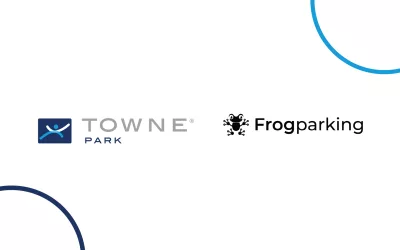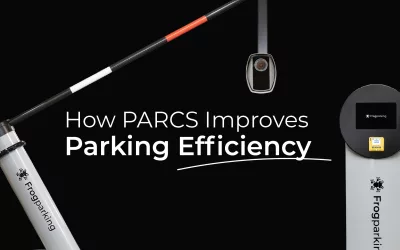A Fireside Chat with Dr Tim Brooks.
‘Laws without enforced consequences are merely suggestions’ – Ron Brackin, Investigative Journalist.
Why Compliance Matters
You’ve set time limits & rates for your parking operation. You’ve put up all the signs, maybe even invested in some fancy pay-on-foot machines. Job done, right? Time to call it a day and everything will take care of itself…. but believe me, it’s not that simple.
If there’s no follow-through, you’re asking for trouble. The moment people realize there’s no consequence for breaking the rules, the word spreads like wildfire. And trust me, it will. Now, all that signage and tech? Wasted…. and before you know it, you’re left with a free-for-all situation.
If you set a rule, there must be a consequence for violation. This not only protects your revenue stream, but it ensures fairness for drivers and is to the benefit of the businesses for whom you zoned. A classic example? You’ve zoned 60-minute spaces in a busy business district to encourage customer turnover. But, if the first person parks all day, new customers won’t get a chance to shop, and the businesses suffer.
How to Implement an Effective Compliance Program
Traditionally, parking enforcement relied on manual methods: citing expired meters, chalking tires, and patrolling. And yes, while I agree that these approaches sometimes work, they tend to be labor-intensive and inefficient. There is a better way.
Leveraging Technology for Smarter Compliance
This is where technology comes in. The future of parking management is automated. By tracking vehicle entries, exits, and payments (have you heard of Frogparking’s Parking Management Solutions?), violations can be detected in real time. After a reasonable grace period, violations are electronically recorded, citations issued, and the process streamlined.
Here’s how it works:
- Efficient staffing: Agents are dispatched only to confirmed violations, eliminating the need for constant patrolling.
- Streamlined administration: Digital citations mean no manual data entry or paperwork processing.
- Automated post-citation workflow: Payment and appeal portals allow drivers to manage their own violations, reducing administrative workload.
Compliance is About Fairness—Not Just Revenue
A compliance program is not a cash-grab. While it’s unlikely that you’ll ever eliminate violations, the aim of your compliance program is to promote fair parking behavior. A good compliance program encourages drivers to stick to the rules; pay the required fees and/or move on when it’s time. Done right, a compliance program will generate enough revenue to be self-sustaining, with a small surplus to sweeten the deal.
But, here’s the kicker: a poorly run program leads to public backlash. If people feel they’re being unfairly cited or the system isn’t clear, they’ll avoid using your parking altogether. Not good for anyone.
Finding the Right Balance
Now, let’s talk about balance. I get it—you’re thinking, “I’ve got technology; I could have an agent ticketing every violation the moment it happens.” It’s tempting, I know. But believe me, that’s not the way to go. Your compliance program should not be draconian.
You want to appear lenient when possible. Give drivers a little grace to move their vehicle or extend their session. I always recommend this: only cite for significant violations. This way, if someone appeals, you’ve got the evidence to back up your decision.
And don’t forget you may be legally required to allow appeals in court, but trust me, that’s a last resort. It’s always better to waive a ticket here and there, with a warning, rather than pushing someone to take it to court. Remember, you want to maintain goodwill.
So remember: balanced compliance approach includes:
- Grace periods: Allow drivers time to adjust their parking situation, and you’ll build a lot more goodwill.
- Selective citation: Focusing on significant violations ensures enforcement feels fair and reasonable.
- Generous waivers: If there’s reasonable doubt, waive the ticket. It keeps the peace and helps maintain public trust.
A Case Study: Frogparking’s Local City
Let me give you a real-world example. Frogparking’s local city (Palmerston North, New Zealand) has been running a successful compliance program for the last 15 years. They’ve applied all the principles I’ve just talked about.

Here’s what they’ve done:
- On-street sensors, integrated with mobile apps and payment terminals, link payments to parking sessions.
- Compliance agents are dispatched only after a reasonable grace period.
- Citations come with photo evidence, which drivers can view before appealing.
- Drivers have a portal to pay and lodge appeals, making the whole process more transparent.
And the results? You’re going to love this:
- The central business district now sees 103% of the used parking minutes being paid for on a daily average (yes, really—people often pay for more minutes in the morning than in the afternoon).
- City-wide compliance stands at 90% (most drivers just follow the rules).
- Drivers understand the system, and when disputes arise, the clear appeal process keeps everyone happy.
Take Control of Compliance with Frogparking
Now, I’m sure you’re wondering how this all works in practice?
Frogparking’s compliance module, especially when combined with our full parking management system, is the cost-effective solution you need. FrogComply gives you full control over your parking rules and follow-up activities, letting you issue citations for violations, collect payments, manage appeals, and even handle delinquent violators.
If you’re serious about making your parking system more efficient, believe me, you want to check this out. Book a demo today!
Signing off,
Dr. Tim Brooks.



